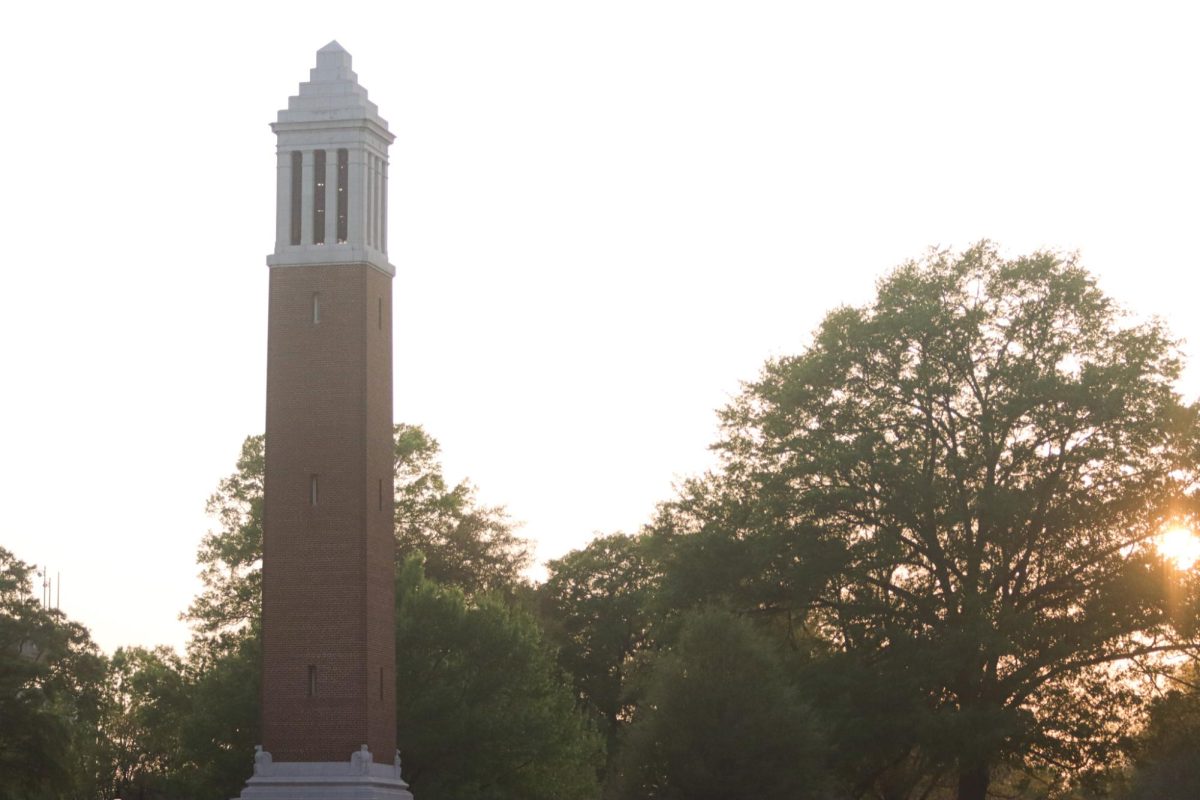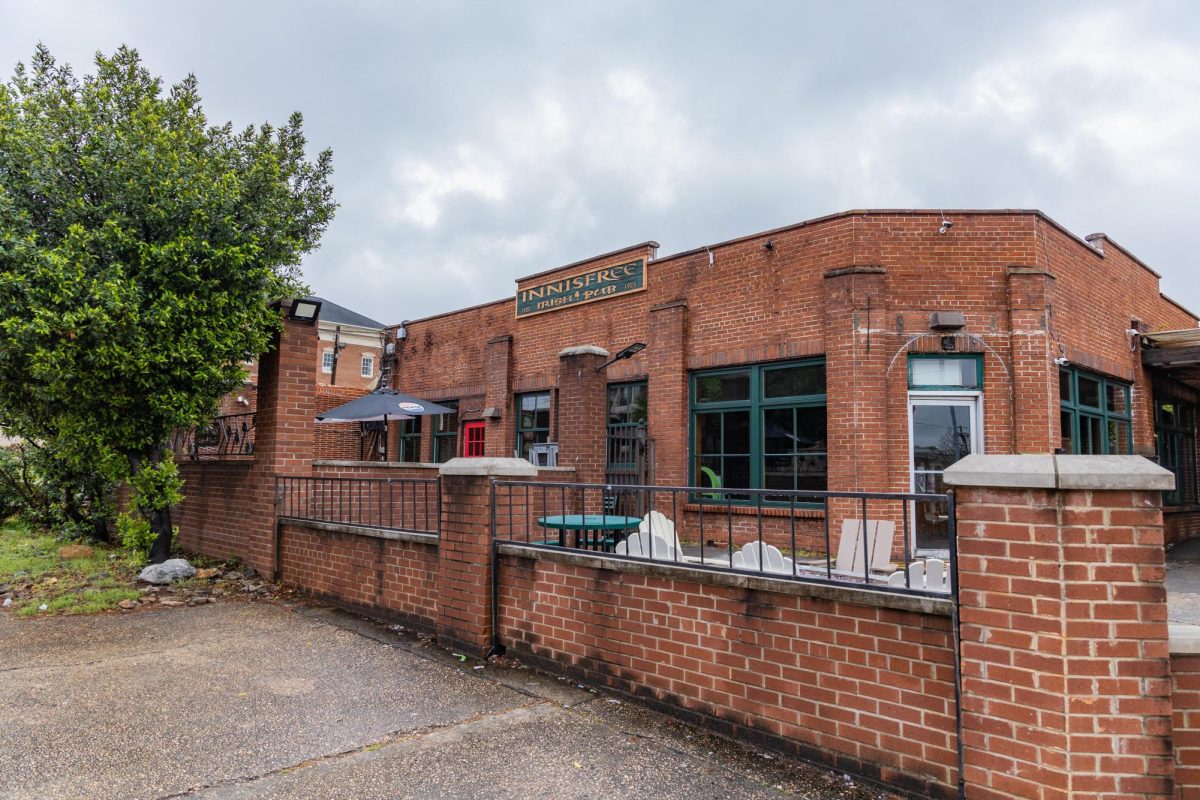 One year ago, before the sky sickened to a pale green, the Downs neighborhood was known for its trees. One of the three historic neighborhoods of Tuscaloosa, the Downs tapers off of Hargrove Road and slopes like a sink bowl from its northern crest to its southern depression. Sixty nine houses ascend and fall like a canyon of roofs along a heart-shaped loop that sees walkers each night circling up and around the street, but skyward, one can see a yawning horizon that one year ago would have been obscured by a canopy of trees.
One year ago, before the sky sickened to a pale green, the Downs neighborhood was known for its trees. One of the three historic neighborhoods of Tuscaloosa, the Downs tapers off of Hargrove Road and slopes like a sink bowl from its northern crest to its southern depression. Sixty nine houses ascend and fall like a canyon of roofs along a heart-shaped loop that sees walkers each night circling up and around the street, but skyward, one can see a yawning horizon that one year ago would have been obscured by a canopy of trees.
Jennifer and Tom Land have the only magnolia tree for four houses on their southern block of the Downs.
“Have you noticed how we still have magnolias?” Jennifer Land asked. “Magnolia trees are amazingly resilient.”
The Lands’ magnolia tree, as if by natural selection, withstood the winds of the April 27, 2011 tornado that deforested the Downs into an urban prairie.
“There are no trees, and the wind is incredible,” Tom Land said. “We have no noise barrier. We have no wind barrier.”
“And our furniture blows off of the porch,” Jennifer Land added.
“I used to could barely hear a train when I was working in the yard,” Tom Land continued. “Now, I can sit in the house with the television on and hear a train easily.”
The Lands were home when the April 27 tornado unwound from the clouds and burrowed into the Downs like a half-mile drill.
“I remember being hyper-focused and hearing every tree hit, you know, and you (could) hear, ‘Boom!’” Tom Land said.
As uprooted trees thudded against the Lands’ roof, one neighbor’s pine tree slung from across the street and clipped the Lands’ gutter with enough momentum to cartwheel it downward and slice the Lands’ water spigot like a buzz saw.
“[It] decapitated our spigot,” Tom Land said. “The water started shooting across the whole place.”
The Lands’ yard had become barricaded with debris stacked about 13 feet high and 20 feet across, Tom Land said, and the water loosened from the sliced spigot was soaking the entire southern block of the Downs where the downhill tumbling of the tornado had done its greatest damage.
But Jennifer and Tom got lucky. Screams could be heard from the Section 8 housing of Rosedale Court, stretched in ruin half a football field behind their house.
“We’re fifty yards from people being killed right there,” said Paavo Hanninen, a neighbor of the Lands who also lives on the southern block.
The tornado rendered about a dozen of the houses unlivable, although each of the 69 houses in the Downs endured damage from fallen trees or airborne debris.
No Downs resident was injured, which apparently used up the neighborhood’s luck. Jennifer and Tom said many efforts to restore the neighborhood to pre-storm normalcy have been met with resistance from insurance companies, contractors or the city administration, to varying degrees.
On May 13, the Tuscaloosa News published a letter to the editor sent from the Downs Neighborhood Association that asked for the city government to restore the Downs to pre-storm conditions. One request called for the rebuilding of the fence along 10th Avenue that was torn down to make an entrance for construction vehicles.
“We needed it that way, and everybody understood that,” Tom Land said.
“But we didn’t have the promise that it was going to be put back up,” Jennifer added. “And we didn’t want this street to be a cut-through from 10th [Avenue] to Hargrove.”
As for the houses damaged in the storm, Tom Land said several of them have been rebuilt completely, but at least two stand in a deadlock with their insurance companies.
“It’s been hard,” he said about the hurdles of insurance adjustments. Then, he thought of a more appropriate description. “It sucks. Sitting through the tornado was the easy part, if it didn’t kill you.”
On top of insurance quarrels, the Downs’ zoning as a historic district has complicated the neighborhood’s recovery. Specific guidelines set forth by the Historic Preservation Commission must be met. Window frames must be made of wood or wood vinyl and have the same number of window panes, for instance, and fences must have their supports on the inside rather than exposing the posts to the onlooker.
But the staggering number of houses to be rebuilt led in many instances to approval being granted from the city without the formal procedures involving the commission.
Overall, Tom said the city administration, under the leadership of Mayor Walt Maddox, has taken the right steps toward establishing a long-term, sustainable recovery. He disagreed with University history professor David Beito who, in a recent op-ed in the Wall Street Journal, claimed that Tuscaloosa was flagging behind Joplin, Mo., in its recovery.
“You know what: everybody wants it long-term, except for the business owners who have to get back up,” Tom said. “The residents want it to be something good, long-term.
“I’ve been to so many meetings. There are tons of people at this stuff—a lot of input. He (Beito) acted like nobody was getting input.
“There are some things that I don’t agree with, but overall, they’re doing great,” he said. “I think most people feel that way. All of my friends here—we all have a voice. I spoke [with the mayor] about a few different things. Overall, though, I’m really pleased with the mayor. I speak with him a good bit now. I don’t agree with everything, but how can you get everybody to agree on anything?”
Today, ten minutes after 5 p.m., the Downs will have an informal commemoration of the tornado’s anniversary. In tow with a bottle of champagne, Jennifer and Tom will accompany some of their neighbors up the street where they walked one year ago out of their neighborhood and into uncertainty. Side by side, they will pass each house that stands as a physical embodiment of the community’s resilience as they head toward one of the few trees near the Downs’ entrance that remains since April 27.
“We have this togetherness now,” Jennifer said. “It would have taken years to develop, and the tornado accelerated it.
“We’re meeting under the magnolia.”









